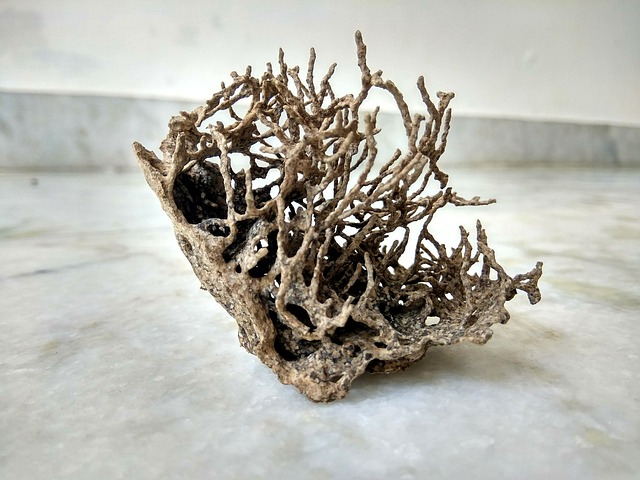Termites, silent destroyers belonging to the Isoptera order, cause substantial structural damage by chewing through wood, paper, and cellulose materials. Living in colonies ranging from hundreds to millions, they spread quickly. While they play a vital role as decomposers, termite infestations become major pests, often going unnoticed until severe damage occurs. Early detection through regular inspections is crucial. Effective Termite Treatment involves prevention, monitoring, and targeted interventions, with modern options including soil treatments, wooden barriers, spot treatments, and fumigation. Safe and eco-friendly methods using natural repellents, biological control agents, or non-toxic baits offer compelling solutions for both homeowners and the environment. Prompt identification of signs like swelling wood, tiny holes, and mud tubes is key. Preventive measures include annual inspections, buffer zones, proper drainage, termite-resistant materials, and crack sealing. Selecting reputable professionals with modern treatment methods ensures effective protection for your property, family, pets, and the environment.
Termites can cause significant structural damage to homes, leading to costly repairs. Understanding these silent destroyers and their impact is the first step towards effective protection. This article explores comprehensive termite treatment options, emphasizing safe and eco-friendly approaches. From recognizing signs of infestation to selecting the right professional services, we provide insights to safeguard your property. Learn about common treatment methods, the benefits of green alternatives, and best practices for preventive measures against these relentless wood-chewers.
Understanding Termites and Their Impact

Termites are silent destroyers that can wreak havoc on homes and buildings, causing significant structural damage over time. These small insects belong to the order Isoptera and are known for their ability to chew through wood, paper, and other cellulose materials. They live in colonies, which can range from a few hundred to several million individuals, and work together to feed and expand their network. Termites play a vital role in nature as decomposers, breaking down dead wood and contributing to nutrient cycling. However, when these creatures invade human structures, they become a major pest, often going unnoticed until severe damage occurs.
The impact of termite infestations can be devastating. They can infiltrate homes through the tiniest cracks, undetected for months or even years. Once inside, termites feed on wooden elements, including floorboards, walls, and furniture, leading to weakened structures. The cost of termite treatment and repair is substantial, making early detection crucial. Regular inspections and understanding common entry points are essential steps in protecting properties from these relentless intruders. Effective Termite Treatment involves a combination of prevention, monitoring, and targeted interventions to ensure homes remain safe and secure.
Common Termite Treatment Methods

Termite treatment options have evolved significantly, providing homeowners and professionals with a range of safe and effective methods to combat these pests. Common termite treatment methods include soil treatments, wooden barrier treatments, and targeted local applications. Soil treatments involve applying chemicals directly into the ground to create a barrier that protects structures from termite invasion. This approach is particularly effective for preventing termites from accessing buildings in areas where they are known to be present or where conditions are favorable for their proliferation.
Wooden barrier treatments focus on sealing potential entry points by applying chemical barriers around the perimeter of structures. These treatments can include physical barriers like steel sheets or chemical barriers painted onto wooden elements. Targeted local applications, such as spot treatments and fumigation, are used to address specific areas infested with termites or to eliminate localized infestations. Fumigation involves filling a structure with toxic gases that disorient and kill termites, while spot treatments use targeted chemicals applied directly to affected wood. These methods ensure minimal exposure to non-target organisms and the environment, making them safer alternatives in termite treatment.
Benefits of Safe and Eco-Friendly Treatments

Safe and eco-friendly termite treatments offer numerous advantages, both for homeowners and the environment. These methods focus on eliminating termites while minimising the use of harmful chemicals, ensuring a healthier living space and reducing ecological impact. By adopting such practices, residents can effectively protect their properties from termite infestations without contributing to soil or water contamination.
Such treatments often involve natural repellents, biological control agents, or non-toxic baits, which are less aggressive and more targeted in their approach. This reduces the risk of collateral damage to non-target organisms, including beneficial insects and wildlife, commonly associated with traditional termite pesticides. Moreover, eco-friendly options can be highly effective, providing long-lasting protection and peace of mind for homeowners concerned about the health and safety of their families and the local ecosystem.
Identifying Signs of Termite Infestation

Termites are silent invaders, often going unnoticed until significant damage has been done. Identifying signs of an infestation early is crucial for effective termite treatment. Keep an eye out for subtle indicators like wooden structures or furniture that appears to be swelling or warping. These could be signs of termite tunnels eating away at the wood.
Another telltale sign is the presence of small, tiny holes in cardboard, wood, or paper materials. Termites create these openings to access their food source and may indicate an established colony nearby. Moreover, if you notice mud tubes on walls or floors, especially near windows or doors, it’s a clear indication that termites are actively seeking entry into your home. Prompt action is key; regular inspections and professional termite treatment can protect your property from these destructive pests.
Best Practices for Preventive Measures

The best practices for preventive termite treatment begin with understanding and addressing potential entry points into your home or property. Regular inspections are key; checking for any signs of termites or their activity at least once a year can help detect infestations early, when damage is minimal. Maintaining a buffer zone around your structure by clearing away debris, woodpiles, and other materials that might attract termites is also crucial. Proper drainage is another essential preventive measure; ensuring water doesn’t pool near your foundation reduces moisture levels, making your home less appealing to termites.
Using termite-resistant building materials when constructing or renovating can further deter these pests. For existing homes, sealing cracks and gaps in walls, floors, and foundations with appropriate sealants creates physical barriers. Regular tree trimming and maintaining a healthy landscape by promptly addressing any dying or fallen trees nearby also plays a significant role in preventative care, as these can serve as breeding grounds for termites.
Choosing the Right Professional Services

When it comes to termite treatment, choosing the right professional services is paramount. Look for companies with a proven track record and specialized knowledge in termite prevention and control. Reputable firms will offer comprehensive solutions tailored to your specific needs, whether you’re dealing with drywood termites, subterranean termites, or other species.
Research their methods, certifications, and customer reviews to ensure they employ safe and effective termite treatment options. Modern treatments often involve less toxic chemicals and eco-friendly practices, minimizing risks to your family, pets, and the environment. Additionally, professional services provide ongoing monitoring and maintenance plans to prevent future infestations, offering long-term protection for your property.
